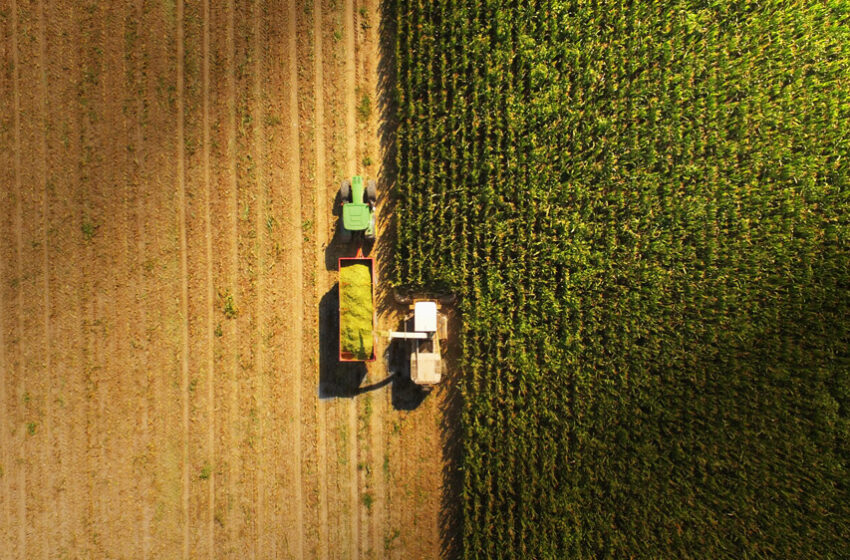We Are What We Eat — And We Must Make Food Decisions With the Climate Crisis in Mind


by TWILIGHT GREENAWAY
If we had been told, a decade ago, that so many climate-fueled disasters would hit the food system so soon, would we have believed it?
If someone had described the catastrophic flooding of the Missouri river that submerged a million acres of corn and soybeans in 2019 (followed a year later by winds in the same region that were so destructive they flattened corn silos), crops in Texas freezing in April, winemakers having to throw away entire vintages because they tasted of wildfire smoke, shellfish in British Columbia being literally cooked alive in the ocean and ranchers throughout the West being forced to sell off tens of thousands of cattle so they wouldn’t starve due to drought—would we have listened?
Would we have done more to prepare?
I can’t help but think back to a lecture I sat in on in 2008 on the future of food and climate change by a pair of Ivy League economists.
I had seen An Inconvenient Truth and was serious about local food. And I had a hunch that reducing my “food miles” wouldn’t cut it.
The economists talked about the potential boon to crop yields, due to “increased photosynthesis” and “CO2 fertilization,” but added that warming temperature and rising evaporation would balance one another out, at least in our lifetimes.
Some places would get too wet, and some would be too dry, they warned. And, as if to reassure us, they said that other parts of the world—developing nations with little infrastructure and large numbers of subsistence farmers—would face the worst of the problem.
And those of us in North America? We’d be fine until at least the end of the century.
Then someone turned the lights back on, the economists thanked the audience, and everyone went home.
I wrote about the lecture, quoted the experts on the science and was careful to take a similarly calm tone, as if I were writing from a great distance about something that may or may not occur.
Of course, some climate scientists were already issuing dire warnings at that point, and many had made concerns about our ability to feed ourselves central to their pleas for action.
But most of us had no idea how urgently we needed to prepare for what we’re now seeing play out in the food system—and in the world at large. Indeed, the stakes couldn’t be higher.
Food production has been rocked to the core and many small and medium-scale farmers are contemplating throwing in the towel.
Disruptions to Food Production
This fact was driven home for me this summer, as I trudged through ankle-deep mud on my family’s small farm in Captain Cook, Hawaii—on what was once the “dry side of the island” but has seen record-level, nearly non-stop rainfall for the past year.
My mother, a farmer, was dismayed at the constant rain’s impact on her orchards, and by the host of new invasive species—from fire ants and wild boars to slugs that carry a brain-eating parasite—that are thriving there due to warming temperatures. The soil has been consistently saturated with water, and the coffee and fruit trees are suffering from multiple fungal diseases at once. The vegetables in the gardens are often stunted and mildewy as the sun has stubbornly refused to shine.
And I thought about those self-assured economists when I returned home to drought-stricken Northern California, where I saved water from my kitchen and shower and lugged it to the tiny garden I struggle to keep alive through the dry season.
Most of the small-scale farms in the area didn’t have the luxury of reclaimed water; instead, they found themselves watching their wells run dry, abandoning dozens of acres at a time, making radical changes to their business models, and discontinuing their CSAs.
Meanwhile, the ongoing, often terrifying onslaught of wildfires made the mere thought of rain seem like a mirage on the other end of a very long desert.
The fact that these “new normals” have already had a dramatic impact on the food system probably shouldn’t be a surprise.
Global temperatures have already risen 1.5 degrees Celsius above pre-industrial levels and the impacts are evident.
The sixth assessment report published by the Intergovernmental Panel on Climate Change (IPCC) in August warned of significant drops in crop yields for corn, wheat, rice, and other cereal grains if global temperatures hit the 2 degree C level.
If that happens, the report said, there will be “more times of year when temperatures exceed what crops can stand” and “risks across energy, food and water sectors could overlap spatially and temporally, creating new and exacerbating current hazards, exposures, and vulnerabilities that could affect increasing numbers of people and regions.”
Among the clear list of hazards are the “food shocks” caused by extreme weather events—and they show no sign of slowing down.
For these reasons, food prices are expected to increase at a steadier clip than most of us have experienced in our lifetimes. According to the United Nation’s Food and Agriculture Organization (FAO), for instance, global food prices rose by nearly 33 percent between September 2020 and September 2021.
And like the economists suggested, warmer temperatures will also likely allow more farming to take place closer to the earth’s poles, endangering virgin forests and tundra—land that has long been off limits to development—leading to more emissions, and ultimately more warming.
This prediction is just one of many Gordian knots at the center of the conversation about food and climate.
Because while the food system is being hit hard by the climate crisis, it also plays a sizable role in causing the problem, accounting for one third of the world’s emissions.
And in addition to carbon dioxide from transportation, nitrous oxide caused by over-use of fertilizer and methane emissions from animal agriculture are both important parts of the puzzle.
Agriculture as Part of the Solution to the Climate Crisis
It’s not just farmers who are scrambling to respond.
Many of the world’s largest, most powerful food companies are starting to examine their supply chains in a new light, hoping to position themselves as part of the solution.
After years spent avoiding the term “climate change” all together, for instance, the American Federation of Farm Bureaus began valorizing many of the largest farms in the U.S. as key players in solving the problem as recently as 2019. Multinational food companies like General Mills, Smithfield, Unilever and Danone are all publicizing the changes they’re making in their supply chains to address emissions and rethink their farming practices.
Some of these changes could have a real impact and others might just be marketing ploys, but it’s clear that they’ve realized “sustainability” is a term they must use literally, as in, do their business models have a future?
When it comes to making sure the rest of us have a future, however, I’m betting on the work of small-scale farmers and ranchers—and more of them working at a human scale—as one of our most important solutions to the climate crisis.
If done right, farming and ranching can help bring the natural world back into balance. And it has the potential to reverse our current scenario: millions of acres of land covered in monocrops growing in soil that is overly tilled, void of most life and actively washing into the ocean nearly every time it rains.
Soil holds three times more carbon globally than the atmosphere does. And it can hold more if it’s managed in a way that brings more of it back to life.
But to do that we need producers who are immensely curious and dedicated—who see the challenge at hand and want to rise to meet it.
They need to work in concert, and they need to represent a much wider swath of the population—here in North America that means intentionally making space for exponentially more young people, more Black, Indigenous, and people of color (BIPOC) producers, and more LGBTQ producers.
It also means passing systemic policies that help them explore, invest in and modernize the farming practices that have long been successful at cooling the planet.
In plain terms that means we need more perennial crops, trees on farms (i.e., agroforestry and silvopasture), managed grazing, cover crops, dry farming, and other methods of deep-soil planting, crop diversity, prescriptive burns, seed sovereignty, local food and farm infrastructure and multitrophic aquaculture.
We need to help more farmers control weeds without over-tilling the soil.
We need more compost on the surface of the soil and more mycelia and living ecosystems below.
We also need more plants at the center of our plates.
We need to spend more time listening to Indigenous communities and remembering that our needs are inextricable from the needs of the natural world, and the ecosystems that have kept it in balance for millennia.
Most of this probably won’t require new cap and trade markets, new consumer labels or new technology.
But it will require more hands—and very likely a different, more collective approach to land ownership, at a moment when building housing is considered a much more valuable use of land than producing food.
None of this will mean much if we don’t also stop burning fossil fuels—and subsidizing that burning on a global scale.
But there’s more and more agreement among scientists and climate advocates that we also need to turn more of our agricultural soil into a carbon sink, and that doing so is a matter of how and when—not if.
Our Food Decisions Can Make a Difference
The good news is that a lot of smart people are already working on the how.
And that’s where your dinner—and breakfast, lunch, snacks—enter the picture.
There’s a healthy debate in both agriculture and climate circles about the value of individual action versus the need for systemic change. And food, thankfully, lies at the intersection of both.
What we do—and eat—every day is who we are.
When we support people who produce food with the climate and soil health in mind—whether that’s buying from them directly, using a farmers’ market SNAP dollar-matching program or dining in restaurants that cook with their foods—it often has the curious effect of making us into the kinds of people who want to vote for, and fight for, systemic change.
I was thinking about this recently while lugging a bucket of dishwater out to my garden and feeling a little like I was wasting my time, as my neighbors were still turning on their hoses. It hurts my back, it’s absurdly time consuming. But every time I do it, I am made again and again into the person who notices water and who keeps noticing water—who notices plants, notices soil. And being that person is what makes me ache for climate policy that prioritizes survival for all.
Can we change the food system in time to help cool the planet? That’s an open question.
Do we have any real choice but to try? As I see it, absolutely not.








